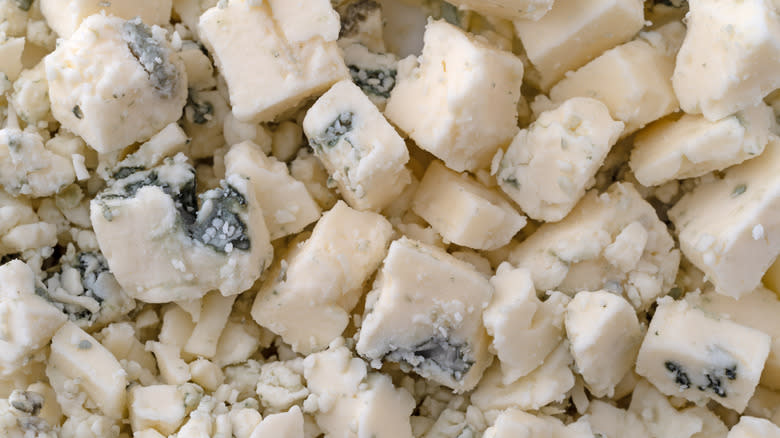madalyn mackarey
·3 min read
You don't want to see mold in many foods, like a container of yogurt or a bunch of fresh tomatoes on the vine, and one of the key indicators that cheese has gone bad is when blueish moldy spots begin to appear. But your blue cheese is the delicious exception to this rule. Those branches of blue-green veins twisting their way through a hunk of blue cheese are Penicillium mold spores, safe to eat and necessary for giving blue cheese its distinctive taste.
For hard cheeses, you can easily slice off or cut away a speck of mold and consume the rest of the cheese. But for soft cheeses, particularly blue cheeses, once unintended mold has appeared, it's time to toss out the cheese. The mold you don't want to see in blue cheese looks drastically different from the blue-green mold spores you do want. Look out for fuzzy mold, darker in color, usually black or grey. Yeast may also appear in more yellow or pink colors that look slimy. These indications will help youdistinguish the bad mold from the good mold on your blue cheese.
Read more: 7 Butter Brands You Should Buy, And 7 You Shouldn't
Common Characteristics Of Blue Cheese: What Indicates Spoilage?
When you unveil blue cheese, your nose is immediately hit with a powerful, pungent odor. This odor is famously divisive, separating the blue cheese lovers from the averse. It can even be confusing, causing some to believe the cheese has gone bad. Your nose will have to learn to distinguish between a classic blue cheese stench and the stink of spoilage.
It's normal for blue cheese to have a slightly ammonia-like stench initially, but once it grows stronger, proceed with caution. It could be an indication of spoilage. Once that smell turns more musty or fully ammonia-pungent, it's likely a done deal. But because blue cheese's scent can be confusing, it's best to stick within a timeline of about one to two weeks after opening. The body of the cheese should remain white and creamy, with the blue-green veins retaining their color as well. The fuzzy mold and slimy yellow to pinkish spots are your best bet for indicating surefire spoilage.
Properly Storing Your Blue Cheese For Optimal Freshness
Make sure your blue cheese is fully wrapped and sealed to avoid letting in too much oxygen to speed up the spoiling process. However, plastic wrap isn't your friend when storing cheese, including blue cheese, as it can often negatively affect the taste of the cheese itself. It's best to seek out cheese paper, which may be what your blue cheese came wrapped in. Cheese paper is similar to parchment paper in texture, and is specially designed to help your cheese breathe a little.
There's even cheese wrap designed specifically for blue cheese, with a waxy cheese paper layer inside to cover the rindless blue cheese, and a foil layer outside for sealing. Blue cheese crumbles are a popular choice for topping a salad or making a homemade blue cheese dressing. But these crumbles can often go bad quicker than a large hunk of blue cheese -- about a week after opening. Look out for the same telltale signs -- fuzzy, grey-black mold spots, glistening yellow areas, and an ammonia-like smell -- and you'll be sure to enjoy your cheese worry-free.
Read the original article on Daily Meal.


